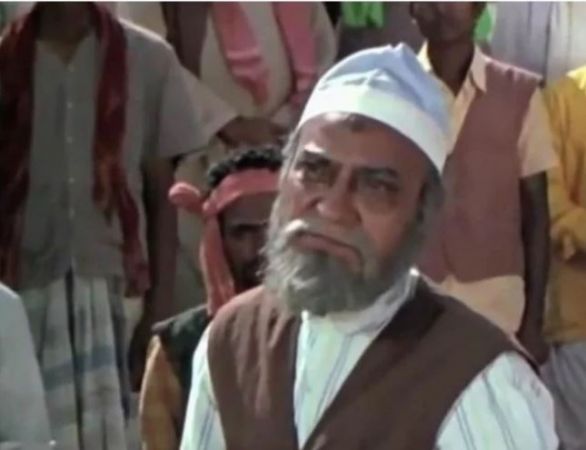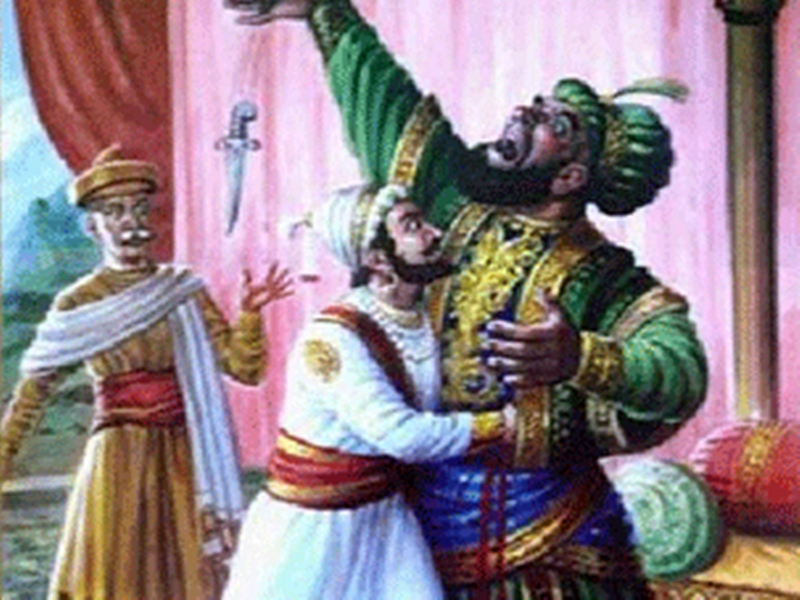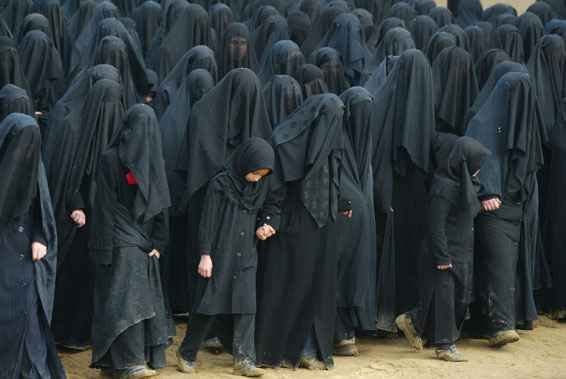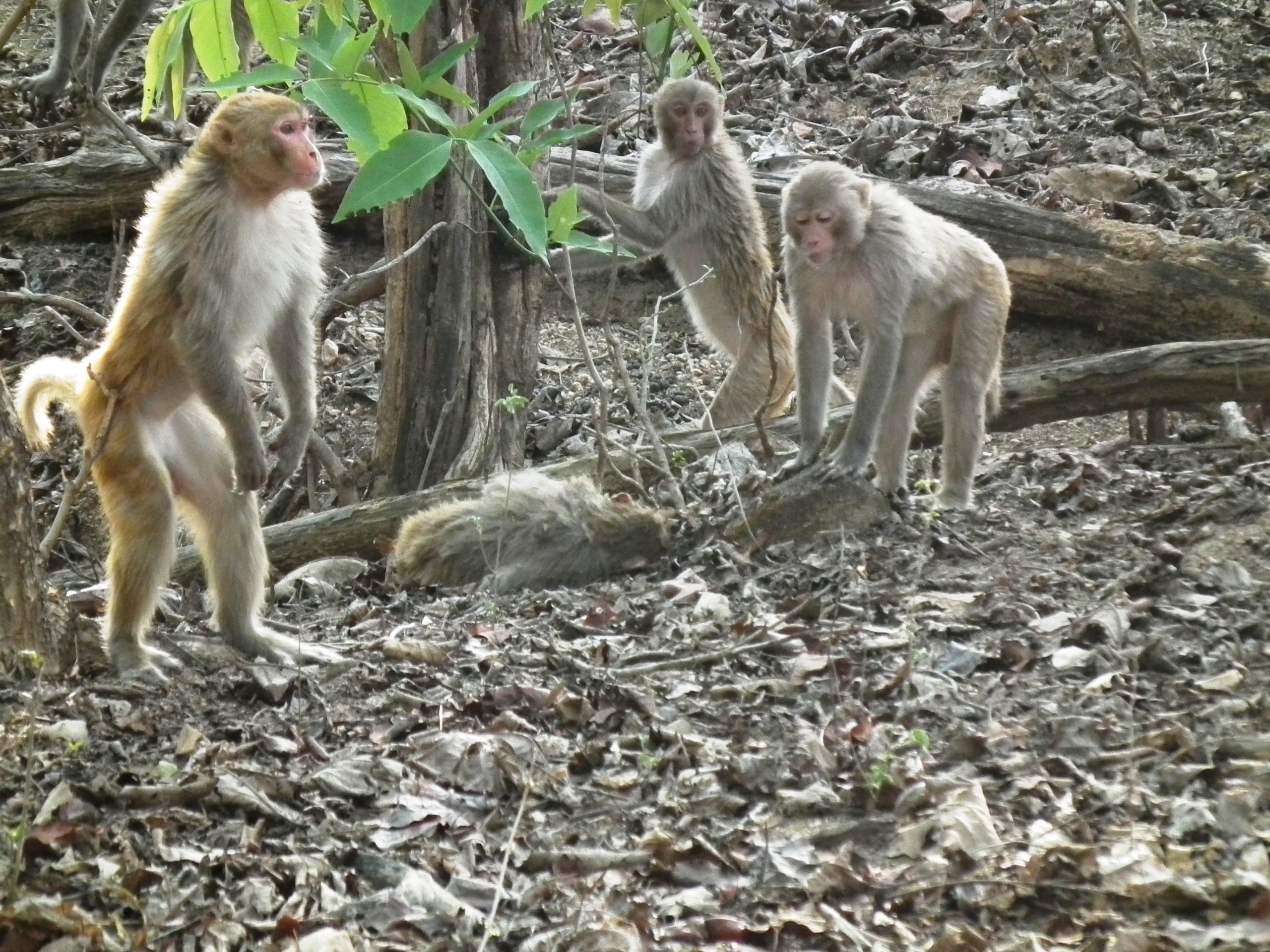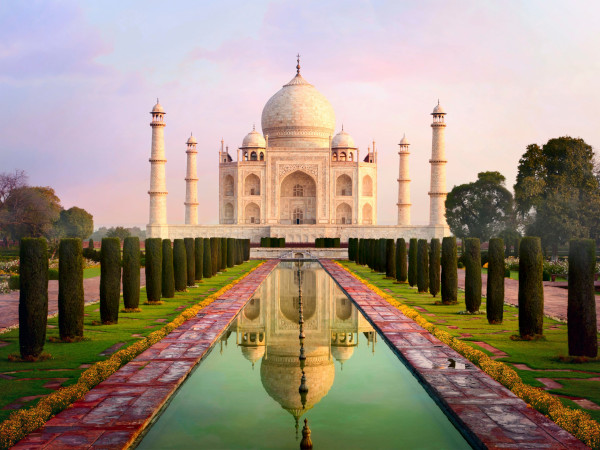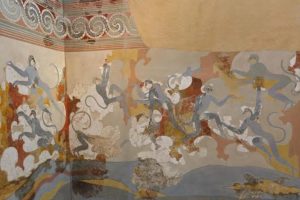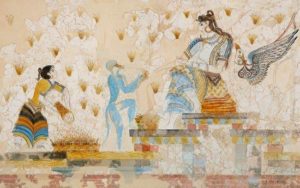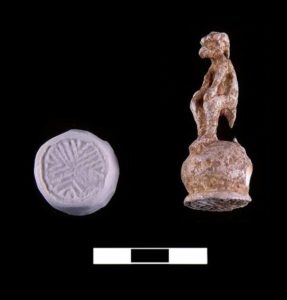??????? ??? ??? ????-????????? – Revised & Enlarged

(In view of Ugra’s very useful comment, I had to look deeper and found that the post itself needed revision. So here it is.)
??? ?????????? ????????
??????????? ??? ??????, ??? ????? ????????? ??????? ???? ??? ?????? ?????? ?????, ???? ??? ???? ? ????? ???? ?? ??? ????? ?? ???????, ????? ???? ???????? ??? ???????? ???????? ?????? ??? ??? ??????? ?? ????-?????????. ???? ???? ??????? ????????? ?? ??????? ????? ??????. ???? ?? ????? ????????? ???????????? ?????? ??????? ?? ?????? ???????? ??? ?????-????-????????. ??? ???? ???????? ??? ????? ???????? ???? ??? ?????-????-????????? ???? ????? ?? ??? ?????? ?????? ???? ????????? ?.?. ???? ???? ?? ??? ?????? ?? ????? ????????.
?? ??? ?? ?? ????? ??? ????? –
?????? ??????????? ??????? ????? ??? ‘??????, ???’ ?? ??? ??????? ????-???????? ???????? ???? ?? ???????? ?? ????? ? ????-??????? ????????? ?? ??? ?????-????-???????? ???? ?????. ??? ???????? ???? ???? ??? ?????? ????, ??? ???? ??????? ?- ??? ??? ??????? ??. ???. ????- ‘??????’ … ??. ????? – ????? ‘????-?????? ??????’… ?????. ???, ?? ??? (????. ???), ??? ???? (???. ????), ?????? ???????… ?????. ????? (??????), ????? ‘??????, ???’… ????. ????? (?5?? ???????), ??. ?????, ?????. ??????, ?????. ???, ?????-??. ?????. ??????? ?????.
?? ????????, ?? ???? ???? ??? ???????? ????? ??? ?????? ??????? ?????. ?? ?? ???? ??? ??????? ???? ??? ?????? ?? ????????, ?????, ???????, ????????, ????????, ?????? ??? ?????? ????????? ?? ????-????????.
??????????? & ??????, ?????? ??????? ???? ??? ???? ??? ?????? ??? ??????? ????? ?? ??? ????-????????? ?? ????? ????????, ?????? ???? ???? ???? ??? ???? ???? ??? ????-???????? ????????? ??????? ????? ??????? ???? ????????? ????? ?? ???? ??????? ?????????. ???? ???? ???????? ?????, ?????? ???, ??????? ????, ??? ???????? ??? – ‘??????, ???’ ?? ??? ????? ???????? ?? ??? ???? ??????? ?????????.
?? ????????, ????? ?????? ?? ??????? ???? ??? ?????? ???. ??????? ???? ???????????, ??? ?????? ???????? ???? ??? ?????? ?? ??? ???? ???? ????? ???? ??? ??? ?????????? ??, ???? ??? ???????? ???????? ??? ???? ????, ????????? ?? ?????, ??? ?????????? ?? ?????. ?? ???? ??????? ???? ??? ???? ??? ?????? ?????? ?? ? ???????? ?????? ??? ??????????? ???? ??????? ????????? ?? ??? ????-????????, ???????? & ??????? ????????? ??? ???? ??? ??????? ?? ???? ???? ??? ?????? ???. ??????????????, ??? ???? ?????? ?????? ?? ???? ??????????? ?? ????????? ???? ?? ??? ???? ????.
????? ?? ???? ???? ?? ??? ??? ?????????? ???, ??? ???? ???? ??? ????????? ?? ??????? ??? ????-???????? ?????????, ??? ???? ??? ?????? ?? ????????, ???? ??????? ???? ????, ?? ??? ??? ?????????? ??? ????? ??? ?????????.
???, ??? ??????? ???? ??????? ??????? ?? ???? ???? ?? ??? ??????? ?? ???? ??????? ????????? ?? ???? ??????? ??? ??? ?????? ?? ??? ????? ?? ??? ???? ????. ??? ???????? ?????? ?? ??? ??? ???? ???? ?? ?? ?????? ??????? ??????? ???? ??? ????????? ?? ??? ????????? ???? ??? ???? ??????? ????????????? ?f ???????????, ????????, ?????? ??? ??? ?????? ???? ?? ???? ?? ??? ???????. ?????????, ?? ?? ?????? ???? ??? ???????? ?? ???? ??? ???????? ???????? ???? ??? ???? ??? ?????? ?? ????-???????? ??? ????? ???? ??????? ????????? ?????? ??????.
T?? ???????? ???? ?? ????? ????????? ??? ????? ???????? ?? ???? ???? ??? ?????? ???? ??? ??? ????? ????????? ??? ?? ?????????? ???????? ??? ???? ???? ?? ??? ???????? ?? ??????? ???? ? ????????????. ???? ???????????, ?? ??? ??????? ???? ???? ?? ?????, ??? ?????? ??? ???? ???? ???? ??????? ??? ??? ?????? ???????? ??? ??? ???? ?? ??????, ????????? ?? ?????. ??? ???????, ?? ?? ??? ?????? ????? ?? ???? ??????????? ??????? ?? ??? ?????? ??????????? ?? ??????? ?????, ??? ????? ????? ?? ??????? ??? ??? ??????? ?????.

??? ?????????? ???????????? ?? ??? ?????? ??????, ??????? ?????? ?????? ?? ???????? ??????????? ?? ???? ??????.

???? ?????? ?? ???? ??? ???????? ?? ????????? ?????? ????????????, ????? ?? ??? ???? ?????? ??? ???????????? ????? ????????? ?????? ?????????? ???? ??? ??????? ??????? ?? ???????. ?? ?????????????, ?? ????? ?????? ???? ??? ???? ??? ?????? ???? ?????? ?????? ???? ??? ????-???????? ??? ??? ???? ??????? ????????? ???? ??? ???????? ???????? ?? ?????????, ???????? ?? ?? ???? ??? ???? ????.

??????? ???? ??? ?????????? ?????? ?? ????, ?? ???? ???? ?? ??? ??? ????????? ???????? ??????? ??????????, ??? ???? ????, ??????? ????????? ?? ‘??????’ ??? ???? ???? ?? ‘????????’, ??? ‘???’, ‘?????? ???????’, ‘???????’, ? ‘??????? ?? ??? ??????? ????’ ???. ????????? ????? ‘?????’, ???????? ????? ‘???????’, ??????/?????? ????? ‘?????, ???????? ?? ???????’ ??????, ?????? ?? ? ‘????’ ?? ‘??????????’, ?????? ?? ? ‘??????’ ??? ?? ??. ?? ??? ??? ???????? ???????????? ??????????, ??? ???? ???? ?? ???? ?? ?????? ???? ??? ???? ???? *???? ????? ????? ‘?? ???????’ ?? ‘?????’. ? ?????????? ???? ?????? ????? ‘?????????’ ?? ‘??????’ ??? ???? ‘???????’, ‘?????’ & ‘?????’. ? ?????? ?????????? ?? *???? ?? ??? ????? ????? ‘?? ????’. ????????? ????, ?? ??? ??????? ?? ? ??????, ??? ????????? ???? ‘??? ??? ????? ???????’, ?? ??? ???????????.
??????? ??? ??? ?????-????-???????? ??????????? ?? ???? ????, ?? ???? ?????? ? ???? *??? ?? *????, ??????? ?? ‘????? ?? ????? ?? ????’. ???????? ??????????? ?? ???? ???? ??????? ????? ?????? – ‘?????’, ???? – ‘????,??????’, ????? – ‘??????, ???????’, ????? ?????? – ‘????????, ??????, ?????’. ?? ?? ???? ???? ?? ?? ??? ???? ??? ??? ??????? ????? ‘????’ ??? ‘???????’ ????? ???? ??????.
????? ??? ?????-????-???????? ???? ??? ??? ??????? ???? ?? ?????????? ??????? ??? ??? ?????? ????????? ???? ?? ????? ??? ??????? ????? ??? ???? ?? ??????? ?? ?????????, ??? ??? ??????? ?? ?? ????? ????????. ???? ??? ???? ?? ??????? ???? ??? ???? *??? – ‘?? ?????, ????’ ?? ???? ?? ??? ??? ?????? ?? ??? ?????. ???????, ????? ???????? ????? ???????, ???? ??? ??????? ?? ????? ?????? ?? ??????? ???? ????? ????????? ??? ???? ????? ??? ???? ???? ????????? ?? ??? ??????? ??????. ???? ??? ???? ??????? ??? ???? ?? ???? ??? ???????? ????? ?? ??? ???? ????? ???? ??? ?????, ?? ???? ??? ???? ?? ??????? ???? ?? ????? ????? ??? ???? ?? ??? ????? ??????.
?? ??? ????????? ?? ?????? ???? ??? ?????-????-???????? ???? ??? ??????, ?? ?????? ?? ??????????? ??? ??????, ?? ??? ? ???? ???? ???? ??? ???? ??????? ???????? ??? ??????? ???? ? ????? ??? ????. ?? ??? ????? ????, ?? ????? ????????? ?????? ??? ??? ???? ?? ??? ??????? ?? ???????? ?????????. ???? ????? ???? ???? ?? ?? ???? ??? ????-???????? ????????? ???? ??? ???? ??? ?????? ?????? ???? ??? ???? ??????? ?????????.
?? ??????? ????? ??????? ???? ??? ???? ??? ?????? ?? ??? ???? ???? ??? ???? ???? ? ???????? ???? ??? ????????(?) ?? ???????? ?? ????????? ?????? ???????????? ??? ??? ?? ??? ??? ???? ???? ???? ?? ???? ?????? ?? ????-???????? ??????. ???? ???? ????, ???? ????-???????? ????????? ??? ???? ???? ?????? ?? ??? ????????? ?????? ???????????? ?
??? A????????????? E???????
??????? ?? ??? ?????????????? ????????, ??????? ???? ???????? ?? ???????? ??? ????? ??? ???????, ??????????? ???? ????? ????????? ?? ??? ????? ?? ??????? ????? ???? ??? ?????? ???. ??? ??????????? ??? ???? ?? ???? ??????? ??? ?? ??????? ?????????? ?? ???? ???? ???? ?????? ??????? ????? ?? ??? ?????????.
???, ?? ??? ??? ?????? ???????????? ?????, ?? ???? ?????? ????? ?????, ???? ??????? ?? ??????? ???? ??? ?????? ?? ????? ?????? ??? ??? ??????? ????????? ?????????? ???????? ????? ??????? ???? ???? ??????? ????? ??? ????, ?????? ???? ??? ?????? ???? ?? ????, ????? ?? ??? ??????? ??????? ?????, ??? ???? ????? ????????????, ??????? ?? ???????? ?????? ???? ??????? ?????.
?? ??? ????? ????, ??????? ???? ??? ???????? ?? ????????? ?????? ?????? ???? ?????? ?????????? ???????? ??????? ?? ??? ??? ?????????? ???. ?????? ???????? ???? ???? ????? ?????? ?? ??? ???? ?? ?????-?-?????? ?? ????, ??? ???? ???? ??? ?????? ????????. ?????-?-?????? ?? ??? ???? ???? ????? ??? ???????? ?? ???????? ‘???????’ ??????? ???? ????????? ?? ?????????? ?? ??. ????, ???????? ??????? ????? ???? ???? ???? ?????????? ???? ????????? ???? ????? ????? ???????.


????? ??? ????? ????????? ?? ???????? ???????? ???? ??????????? ??? ???? ??? ?????? ????????? ???? ?? ??? ?????? ?????? ?? ? ??? ????????? ???? ??? ????? ???????? ?? ?? ?????? ?? ???? ?? ?? ??? ?????? ????????? ???? ???? ?????? ????-???? ??.
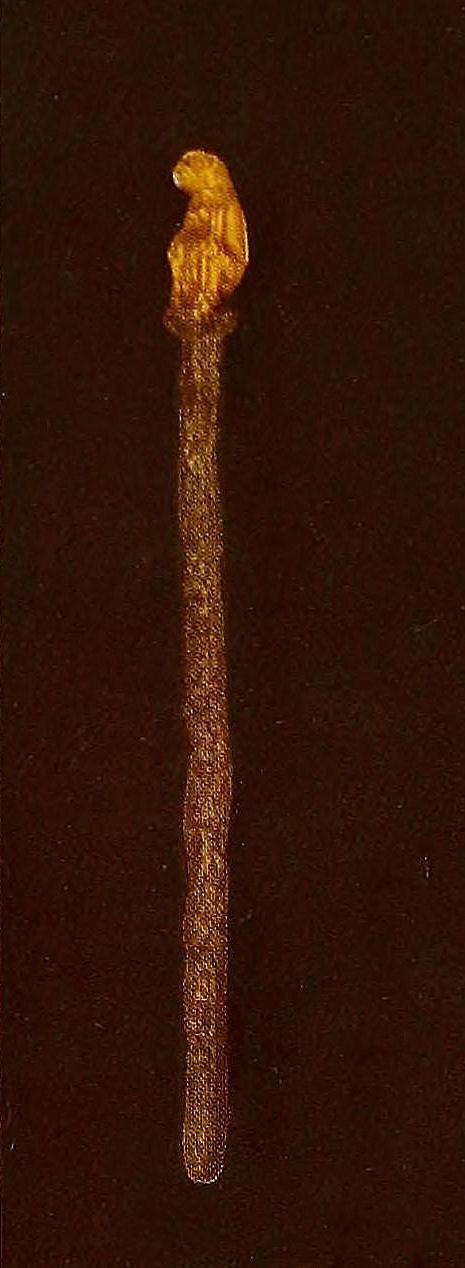

?? ???? ???? ? ?????????? ??????? ???? ?? ?????? ?? ??? ??? ?? ??? ??? ?????????? ????? ?????? ?? ???????????/?????????, ??????? ???? ?????, ??????? ? ?????? ?? ? ????? ??? ??????. ????????? ?? ?????? ?????????,
???? ?? ?????? ???? ?? ???? ?? ????? ??????? ?? ?? ?????? ????????? ??????? ?? ??, ???????? ?? ??? ??? ?? ??? 3?? ?????????? ?.?., ??????? ???? ??? ?????? ?????????? ?? ? ?????? ?????? ??? ????? ?? ????? ???? ???? ???? ???????, ???????????? ?? ?????????.

????????? ?? ?????,
??? ???????????? ???????? ???? ????????? ???? ????? ?? ?? ??? ????? ??? ?????? ?????????? ??????? ???? ???????? ???? ??? ????, ???????? ???? ??? ????? ??????… ?? ??? ????? ?????????? ? ????? ?????? ?? ???? ???????? ?????? ???? ?? ?????? ?????? ???? ????? ??? ??? ?? ??????? ??????. ???? ?? ????????? ????? ??? ?? ??? ?????????? ????????. ???? ?? ??? ??? ?? ??? ?????? ??? ?????? ?? ???????? ?? ?? “?????????? ???? ??? ????????, “???? ??, ???????? ?????? ???? ??? ????... ??? ??? ???-???????? ?????? ????? ?? ??????? ???????? ?? ???? ?? ??????? ???? ?????…
???? ?? ????? ???????????? ???? ?? ??? ???? ???? ?? ??? ??????? ?????? ???? ??? ???????? ???? ??? ?????? ????? ?? ????? ????????, ??? ??????? ?????? ?? ???? ???? ?????? ???? ??? ???? ??? ???? ?????????? ???? ??? ???????? ?? ??? ?????? ????????? ????????????. ???? ????? ???? ???? ??? ???????? ???? ??? ?????? ????? ?????????? ??????? ???? ? ???? ???? ??? ???????? ????????, ??????? ??? ?? ??????? ???????????? ????. ???? ??????? ??????????? ??? ???????? ???? ??? ????-???????? ??? ???? ??????? ???? ??? ?????? ??? ? ???????? ??????.
????? ???????, ?????? ??? ???????? ????? ???? ??? ????? ???????? ?? ??, ??????????? ??? ???? ????, ???? (??????? ????), ????? ??????? ??? ???????? ?? ? ??????? ??????? ??????? ? ?????. ???? ?? ????? ??????? ???? ? ??????? ???????? ????, ?? ????? ???????? ???? ?????????? ???? ?? ??? ?????? ??????? ??????.
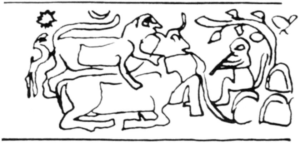
?????? ?????????, ???????? ???? ??? ????????? ?? ???? ?? ??? ???? ???????????? ,?????? ??? ?? ?????????????? ???????? ?? ????-????????? ????????? ?? ??? ???? ????????????. ?? ???????? ??? ???? ???????????? ?? ?? ????-??????? ???????? ??? ????????? ??????????? ??? ????????? ????-????????? ????????? ?? ???? ?? ????? ?? ????-??????? ?????????? ???? ??? ???? ??????? ?????? ???? ??????? ????. ??? ???? ???? ?????? ???? ?????? ??? ??????? ????-???????? ?????? ???? ?? ??? ???????, ???????? ??? ?????????? ?????????? ??? ?????????.
????????? ??????????? ??? ????????? ?? ??????? ?? ???? ????? ?? ??? ??????? ???????? ?? ????????? ???? ??? ???? ??????? ????-?????????.
?? ??? ?????????,
?????????? ?? ??????? ??? ????? ?? ????? ???? ???????, ????? ???? ?????????? ??? ? ?????? ????????????…?? ?? ????? ???? ?? ???? ???????? ??? ??????? ??????? ?????? ??? ???? ?? ??????? ?????????? ?? ????????? ?????????? ????????? ?????????. ??????? ???? ??????? ?? ????? ????? ??? ???????? ?? ??? ???? ?? ????????, ?????, ??????????? ??? ????? ??? ?????? ??? ???????? ??? ?????????? ?????? ?? ????? ???? ????? ?? ??????? ?? ????????? ?????????? ?????????? ??? ?????? ?? ????? ?????? ?? ??? ???? ?? ??????? ??? ??????? ????????.
????????? ?????? ???? ???? ?? ????? ????????? ?? ??? ???? ???? ????? ?? ????? ?? ??????? ???? ??? ????????? ?? ??? ??? ?????????? ??. ?? ???????? ?? ? ????? ?????????? ?? ??? ???? ???????????? ??? ????????? ????? ??????? ??? ?? ????? ?? ???? ??????. ????????????, ?? ??? ???? ???? ??? ???? ???????????? ????? ?? ????? ?? ???? ??? ?.?. ???????? ?? ????? ?????? ??? ????-????????? ????? ??????? ?? ?? ??? ???? ???? ??? ?? ???? ???, ?? ??? ??????? ?????. ?? ??? ???????? ?? ???? ??????? ????-????????? ??????????? ??? ??????? ????? ?????? ??? ???? ???????? ???? ?? ??????? ?????????, ????? ?????? ????????.
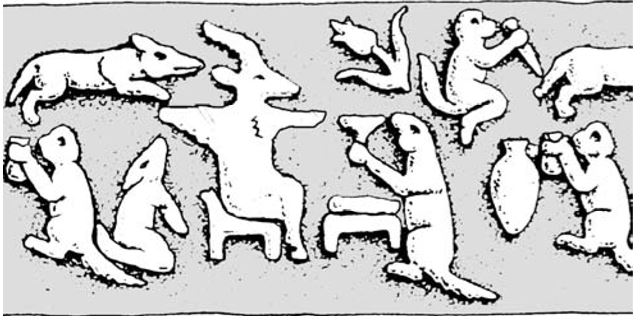
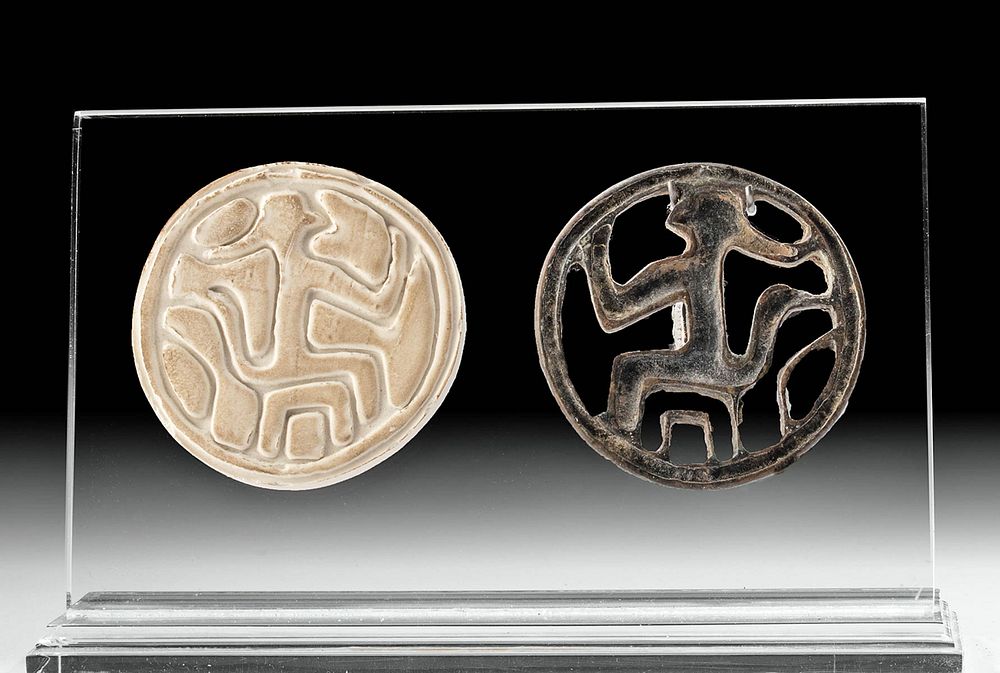
??? ?? ?? ???? ?? ???? ???? ??? ????????? ????????? ????? ??????? ??? ??????? ?? ??? ???? ??? ??? ??? ????????? ?? ?? ?????? ?? ?????, ???????? ??? ??? ??????, ?? ???? ?? ?????? – ????? ???? ??? ?? ??????? ?? ???????? ?? ???? ????????? ?? ??? ?? ?????? ?? ??? ???? ???? ? ??? ?? ??, ????? ???? ???? ???? ??? ????-????????? ?? ??? ???? ???? ??????? ??? ???? ????????? ???? ??? ?????? ? ??? ???? ?????? ?? ????? ????-???????? ???????????? ?
?? ???? ???????, ??? ?????? ??????????? ???? ??????? ????????????. ??? ???? ??????? ????-????????? ?????? ??????????? ?? ???????? ?? ???? ?????????? ??? ???????? ??????????? ?? ???? ????? ??? ???? ????? ???? ?? ??????? ?????? ??? ???? ???????, ??? ???? ??? ?????????? ????? ?? ??? ????????? ?????? ???????????? ????? ??????? ???? ????? ?? ????? ??????? ??????? ??? ?? ?? ??? ???????, ?????? ??? ?????? ???????? ???? ??? ????????? ?????? ???????????? ?? ???? ??? ???????????, ?? ?? ????????? ?? ???? ???? ??? ????????? ????? ???? ??????? ?????? ???? ????????? ??? ??? ????? ?????????? ???? ???????? ?????? ?? ? ????? ??????.
?????????, ?? ?? ???? ?????? ???? ??? ??????? ???? ?? ????????? ??? ???? ???? ?? ???? ??? ???? ??? ?????? ??????????? ?? ??? ???? ?????????? ??? ????-???????? ?????? ?? ??? ??? ?????????? ??? ???? ????. ???? ????????? ?? ???? ?? ???? ??????? ?? ???? ??? ??????? ???? ???????? ?? ????????? ??? ?????? ??????? ???? ?? ??? ???? ??? ?? ??? ????-???????? ???? ???? ????? ???????????? ??? ?????????? ???? ??????? ???? ??? ????.
???? ????????, ?????????????? ?? ??? ?????? ?????? ???, ??????? ?? ??????? ? ?????-???????????? ????? ?? ??? ?????? ???????? ????? ???????? ? ???? ?? ?????????????? ??? ???? ?????????? ????????? ?? ???? ???? ??? ??-?????? ???? ??????? ??????? ???????? ?? ???? ?? ????? ???????? ???? ??????? ??????? ?? ?????? ??????.

?? ??? ??????,
??? ???? ????????, ???????????, ??? ???? ??? ??? ???? ????????? ?????????? ???? ???? ??? ??????? ?????? ???? ???????. ???????? ??????? ???? ?? ????? ????? ????? ???????, ???? ??? ??? ?? ??? ???? ???????? ???? ?? ??? ??? (???. 9), ??????? ???? ???????? ??? ????? ????? ?? ? ?????????????? ?- ?? ?-????? (???. 10). ??? ??????? ???????? ??????????? ?? ??? ???????’ ????? ??? ????? ???? ??????? ???????? ????? ?? ??????? ???? ???????, ?? ????. ??????? ??? ???? ???????????? ?????? ???? ???-????? ???????.
??? ????????? ?? ???? ?? ??? ??????? ?? ?????? ???????? ?? ???????? ????? ?? ?????? ?? ???????????? ?????? ??? ???????? ???? ?????? ?? ?? ????? ???? ??? ?????? ?????? ???? ???? ???? ???? ??????? ???????. ?? ??? ??????,
…?? ????? ???? ??? ???? ??????? ???? ???????? ???????? ?? ???? ?????, ?? ???? ????? ???????? ??????? ????? ?? ?????????? ???????? ?? ????? ?? ?????? ??? ???? ????????. ?????? ??? ?????? ?????? ?? ???? ????: ???? ??? ???? ?????? ???????? ??? ????????? ??? ???? ????????? ????! ????? ??????? ??? ???????? ?? ???????????, ?????? ???? ?? ? ?????? ??? ???????? ????? ???? ?? ????? ?? ????????? ??? ???? ?? “??????” (?? ?? ????? ?? ???????? ???????). ?? ???? ????? ???? ????? ??????????? ???? ????????? ?????? ?? ??????? ???? ??????? ????????? ???? ????.
???????????, ??? ??????? ????? ??????? ?? ????????? ???? ?? ?? ?????? ?????? ???????? ??????????? ?? ??? ????????????? ?? ?????? ????????? ??????? ??? ?????????, ??? ???? ???? ???? ??? ??????? ???????. ?? ???? ??????, ? ?????? ????????? ?? ????? ?????? ? ?????? ?? ??? ??????? ?????? ??? ?? ???? ?? ????? ?????? ?? ?? ? ?????? ???????.

?????? ?? ?? ???? ???? ?????? ??????? ??? ???? ???????? ?? ???? ????? ??????? ????? ????? ??? ??????? ???? ?? ? ???? ???? ???? ?????????, ? ????? ?? ???????? ?????? ??? ???? ?? ????? ????? ???? ???? ? ??????? ???????? ????? ??? ??????? ?????. ??? ????? ??? ??????? ????? ??????????? ????? ??????? ?? ??? ????????? ?????? ?????? ??? ???? ????????????? ?? ??? ????, ???? ???????????, ?????, ??????, ???????? ??? ?????? ??? ??????. ??? ?????? ??????? ?? ?? ??????? ??????? ??? ???? ?? ???????? ???? ??????? ????? ????? ???? ???? ????? ???????, ????? ??? ?????? ??????? ??? ????? ??????? ?? ???? ?????????.
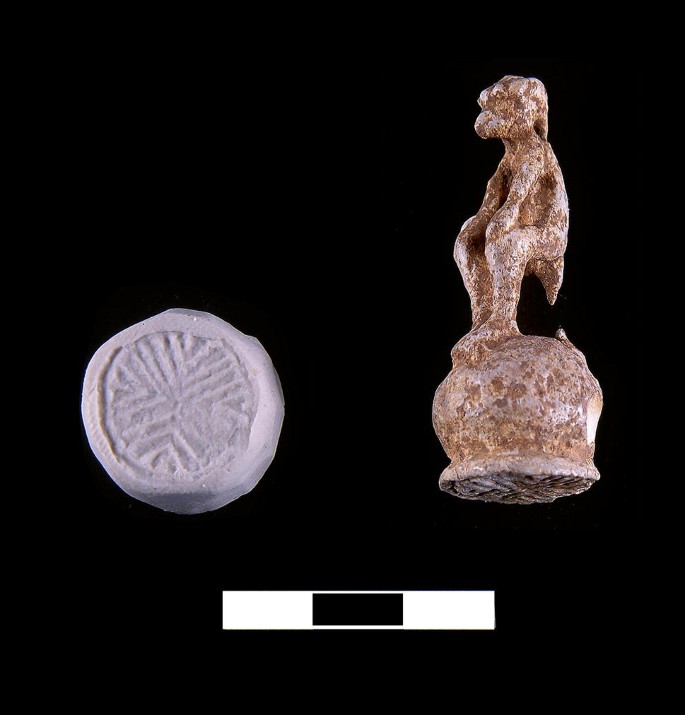
?? ??? ???? ??? ???? ??????? ???? ????????? ?????? ???????????? ???? ?? ?? ?????? ????????? ??????? ?? ?????? ??? ????????? ??????????? ?? ??? ???? ???????????? ??? ?????? ?? ??????? ???? ??? ???????????? ?? ??? ??????, ????????? ??? ?????? ????? ?? ??? ??? ?????????? ???, ?? ? ?????? ???? ???? ?????? ??? ????????? ?? ??????? ????-???????? ??????. ?? ?? ???? ? ?????? ????????????, ???? ??????? ??? ??????? ?? ???????? ??????, ???? ?? ??? ?????? ???? ??????, ??? ???????, ??? ????????, ?????? ???. ???????????? ?????? ?? ??? ??????.
??????????
?? ???? ???? ???? ??? ????-????????? ???? ?? ??? ?????? ?? ????? ???????? ??? ??? ? ???? ??? ?? ???????? ??????? ???? ? ?????-????-???????? ???? ??? ??? ???????? ???? ??????? ???????? ?????. ???? ????? ???? ???? ??? ?????-????-???????? ???????? ??? ?????? ???????? ???? ??? ??????? ??? ??? ????????? ??? ? ???-????-???????? ?????. ???? ????? ????? ??? ???????? ?? ??????? ?? ?????-????-???????? ????????. ??? ???? ?????? ??? ???????????? ????? ????????? ???????? ???? ??? ??????? ??????? ?? ??????? ??? ??? ????????? ?????? ?? ??? ???????? ???????????? ??? ?? ?? ????????? ???? ?????? ???? ??? ???? ??? ?????? ????? ???? ???? ????????? ???? ??? ???????? ???????? ???? ??? ???? ????? ??? ???? ??????? ?????????.
?? ??? ???? ??? ???? ??? ??????? ???? ??? ????????? ?????? ???????????? ?????? ???????? ??? ?????? ?? ????????? ???? ?? ??? ????????? ??? ?????? ??????? ?? ??? ???? ???????????? ??? ??? ???? ??????? ?????????????, ??????? ?? ????? ???? ????-????????? ???? ?? ??? ???????, ???????? ??? ??? ??????????.
?????????, ????? ?? ?????? ???????? ???? ?? ?? ???? ??? ????????? ?????? ???????????? ???? ??? ??????? ??? ??? ???? ?? ?? ?????? ????? ?? ??? ?????? ??? ???? ????. ??? ?????? ???? ?? ??????? ?? ???? ?????? ?? ???? ??? ??? ???? ???? ??????? ???? ??? ?????????. ?? ?????? ????????, ? ???????? ??????? ??????? ???? ??? ?????? ??? ???????????? ?? ?????????, ??????? ???????? ?? ???? ? ?????? ????????????.
????? ???? ???? ??? ?????? ?? ??????? ?? ????-???????? ??????, ??? ???? ??? ??????? ?? ?? ??? ????-???????? ???????? ??? ??? ???? ???? ??? ????????? ?? ??? ????????? ?????? ???????????? ?

